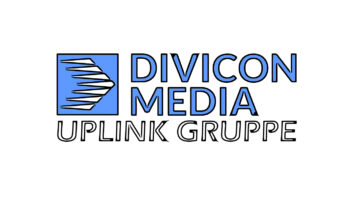Greater Media Retrofits a Master FM Antenna System for Digital Conversion
BOSTON We sure do live in an exciting time for radio. After all, how often do you get to live through the dawn of a new era in broadcasting?
The last major improvement in service was the launch of FM stereo back in the early 1960s. When the corporate office called me two years ago and said that we were committed to launching HD Radio broadcasting on our Greater Media facilities throughout the country over the next few years, I was excited.
When they told me that Boston was going to be the template for all the other stations and we would launch first, I was also concerned. Nobody was on the air yet with this service. Equipment manufacturers barely had prototype units out, and the FCC was far from setting rules and regulations for the new service.
So where do you start? In our case we started from scratch.
Five conversions
In Boston, Greater Media owns and operates five Class B FM stations: WMJX, WROR, WKLB, WBOS and WTKK. Their studios have been consolidated under one roof in a 40,000-square-foot studio complex near downtown.
In addition, the transmitter facilities for four of the five are located on top of the Prudential Office Building in Boston. The fifth station transmits from its own tower in a suburb 20 miles to the north. Having consolidated facilities made planning and construction easier; a cookie-cutter approach could be used because we had similar situations for the five stations.
In total, Greater Media has invested more than $1 million in hardware alone to convert these five stations to HD Radio. This breaks out to roughly $200,000 per station, of which roughly $170,000 each was used for the RF plant improvements, such as the antenna retrofit, and new IBOC transmitters.
There are many ways to employ HD Radio broadcasting, and each radio station will have its own unique conditions that will ultimately determine the most efficient approach for your facility. In my case, we decided that we were going to use separate low-power transmitters for HD Radio.
Because our analog TPOs were in the 20,000-watt range, this meant our HD Radio TPOs would be in the 200-watt range (20 dB below analog). At this power level, a small rack-mount transmitter would work, with single-phase power, low power consumption, low cooling requirements, low installation cost and small transmission line size.
We installed two Broadcast Electronics FMi-73 transmitters along with the required FXi exciters, and the FSi IBOC generators for each station. We run them in a main/alternate configuration just like the main high-power analog systems.
Antenna/combiner configuration
Our stations use an Electronics Research Inc. Cogwheel Master Antenna system with its own high-power analog combiner. We worked with ERI on several ideas for feeding the same existing antenna with analog and digital signals.
The entire project was made possible by the enthusiastic support from our director of engineering, Milford Smith, who has been a backer of the technology from day one. In addition to his responsibilities at Greater Media, he serves as chairman of the DAB Subcommittee of the National Radio Systems Committee, responsible for making recommendations to the FCC on HD Radio.
In addition, Dan Kaiser, R.J. Perkins, Art Pepin and Robby Mossman were on my team to complete the mission. Many thanks to Richard Hinkle of BE, Eric Wandel of ERI and Richard Dudley from Dudley Tower Service for their many long days and nights in Boston.
After much discussion, we decided that a separate low-power combiner unit would be used to combine the HD Radio signals from the other four stations at the Prudential, and feed that combined signal to the existing antenna. The only problem was, how do you then physically get this new digital signal into the antenna?
Through a retrofit of the existing antenna, ERI was able to change out the hybrids on the antenna and effectively provide an additional input port for the IBOC signal. This way, we would minimize any risk to the analog signal, while providing the best pattern match for the IBOC signal.
The output of the transmitters needed to pass through circulators before hitting the combiner to provide the additional isolation needed from the analog system. It all looked good on paper, but a set of airborne “before” and “after” field strength measurements actually confirmed our hopes.
Precious analog
As we all know, the analog audio is still, and will continue to be for some time, our bread and butter. Because the analog needs to be delayed and phase-locked to the digital, in most cases, it’s necessary to run it through the IBOC exciter and IBOC processor. While this is fine, and no quality degradation will occur if it done properly, it does add another link in the air chain.
And this link is a computer! If the processor were to fail, it has the potential to take both the analog and digital audio off. It is prudent to have an easy, or better yet, automatic way to bypass the defective gear.
I worked with BE on this matter, and the company provided a contact closure that occurs when an AES audio problem happens, allowing the user to trigger an automatic bypass of the defective gear. This does, however, drop you out of delay quite abruptly.
Studio considerations
In the studio, because the stations are in delay, the talent no longer is able to listen to the off-air signal. Therefore a “processed program” signal is now fed to the studio loudspeaker, and headphones.
The change also means it’s necessary to provide some kind of enunciator to allow the talent to know if they are off the air. We used a muting receiver and put a silence sense on it. This drives an LED text display in the studio that the talent cannot miss. The display is right in front of the DJ, and it has worked flawlessly so far. Who wants listeners calling to tell you that you are off the air?
So far, it is too early to get any feedback from listeners on the digital sound; the receivers are just now starting to show up in stores.
Another change to be aware of due to the conversion is that listening to a tuner at a remote broadcast will now be a thing of the past. Because of the delay, you will need to provide an alternate method to get the “pre-delay” to the remote broadcast site.
Talk radio stations are used to this, but the rest of us must now use our own method for carving out this new path. Some options are POTS codec, ISDN, SCA or RPU, the old-fashioned analog leased line.
PAD
We are taking advantage of the program-associated data capabilities of IBOC at our stations. PAD, such as real-time name and artist information, needs a path to get from the studio to the transmitter. In many cases this will be an IP address, and will require the installation of a WAN to the transmitter site, not a bad idea in this age of RJ-45 jacks on everything.
In conclusion, since January all five stations have been on the air with the new service. We have had no major problems with equipment, and our analog coverage has not changed.
I was pleasantly surprised to find that after six months of broadcasting, we have received no complaints of interference to adjacent channels. This is especially remarkable despite the additional sidebands generated by the IBOC signal and the crowded spectrum in the Northeast.
Riding around with a Kenwood HD Radio receiver in the car, I can tell you that the sound is spectacular. There is no multi-path, and the processing is able to be more open, making the station sound more like a CD than a conventionally processed feed. It is a delight to listen to.
The future of radio is here, and will certainly raise the level of service we provide to the public, while allowing traditional radio to compete effectively with the ever-expanding number of alternatives our audience is offered each day.











